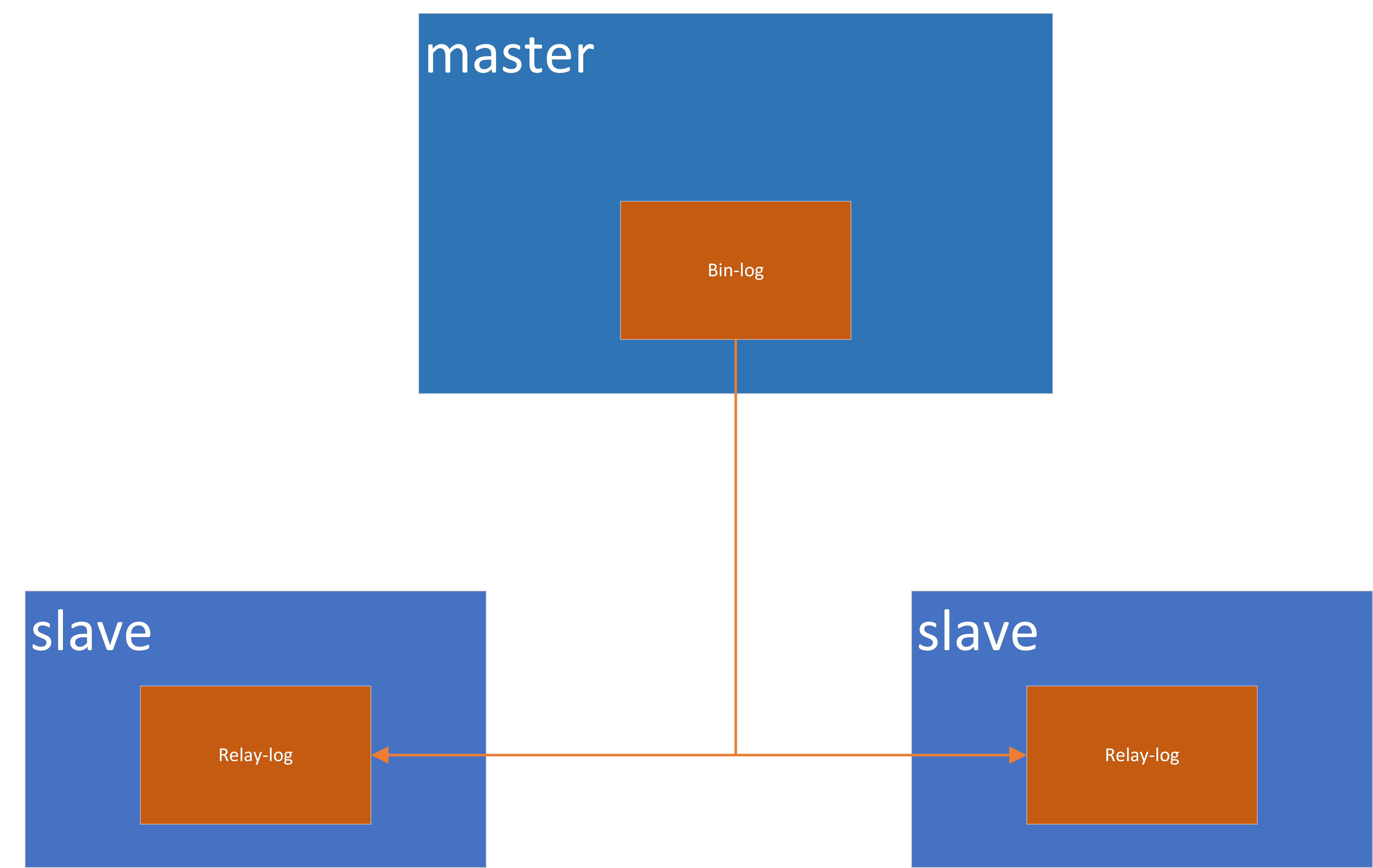一键安装Mysql并配置主从复制
出于学习目的, 编写一键搭建Mysql脚本

主机信息
| IP | 名称 | 角色 |
|---|---|---|
| 192.168.114.133 | node1 | master |
| 192.168.114.134 | node2 | slave |
| 192.168.114.135 | node3 | slave |
使用三台机器,搭建一主两从
前期准备
-
使用Ansible, 便于集群主机节点管理
-
配置文件, 机器IP,角色信息
脚本
配置文件
config.ini
[ssh_password]
halou
[mysql]
192.168.114.133 master
192.168.114.134 slave
192.168.114.135 slave
脚本内容
mysql_master_slave_install.sh
#!/bin/bash
CUR_PATH=$(readlink -f $(dirname $0))
#读取变量
HOST_LINE=`sed -n '/\[mysql\]/,/\[.*\]/p' ./config.ini | grep -v "\[.*\]" | grep -v ^$ | grep -v ^#`
HOST_LIST=`sed -n '/\[mysql\]/,/\[.*\]/p' ./config.ini | grep -v "\[.*\]" | grep -v ^$ | grep -v ^# | awk '{print $1}'`
SSH_PASSWORD=`sed -n '/\[ssh_password\]/,/\[.*\]/p' ./config.ini | grep -v "\[.*\]" | grep -v ^$ | grep -v ^# `
MYSQL_DATA_DIR="/www/mysql/data_dir"
function result_echo
{
if [ $? -eq 0 ]; then
echo "$1" | tee -a $CUR_PATH/log.log
else
echo "$2" | tee -a $CUR_PATH/log.log
exit 1
fi
}
#运行一次,清空一次log
if [ -e $CUR_PATH/log.log ]; then
rm -f $CUR_PATH/log.log
fi
# if [ -e $MYSQL_DATA_DIR ]; then
# rm -rf $MYSQL_DATA_DIR
# fi
# if [ ! -d $MYSQL_DATA_DIR ]; then
# mkdir -p "$MYSQL_DATA_DIR"
# fi
#第一步 安装依赖的基础软件包
yum repolist | grep epel &> /dev/null
#管理节点增加yum源
if [ $? -ne 0 ];then
yum install epel-release -y
yum makecache
fi
yum install sshpass ansible -y
#生成秘钥,并发送给各个节点执行
echo "y\n" | ssh-keygen -t rsa -q -N "" -f ~/.ssh/id_rsa
for host in $HOST_LIST;do
sshpass -p$SSH_PASSWORD ssh-copy-id -o StrictHostKeyChecking=no root@$host &> /dev/null
ssh -o StrictHostKeyChecking=no root@$host 'ls -al' &> /dev/null
result_echo "Ok... No password login is success" "Failed...Use no password login failed, please check!!!"
done
#使用ansible管理主机节点
if [ -e $CUR_PATH/hosts ]; then
rm -f $CUR_PATH/hosts
fi
for host in $HOST_LIST;do
echo $host >> $CUR_PATH/hosts
done
#关闭防火墙
ansible -i $CUR_PATH/hosts all -m shell -a 'systemctl stop firewalld'
result_echo "Ok...Stop filewall success" "Failed... Stop firewalld is failed"
ansible -i $CUR_PATH/hosts all -m shell -a 'systemctl disable firewalld'
result_echo "Ok...Disable filewall success" "Failed... Stop Disable is failed"
ansible -i $CUR_PATH/hosts all -m shell -a 'getenforce | grep Disabled &> /dev/null || setenforce 0'
result_echo "OK... setenforce firewall is success" "Faild... setenforce firewalld is failed"
ansible -i $CUR_PATH/hosts all -m lineinfile -a 'path=/etc/sysconfig/selinux regexp="^SELINUX=" line="SELINUX=disabled"'
result_echo "OK... disabled config firewall is success" "Faild... disabled config firewalld is failed"
#安装mysql
ansible -i $CUR_PATH/hosts all -m shell -a 'yum install mariadb mariadb-server -y'
result_echo "Ok... install mariab success" "Failed...install mariadb failed,please check"
ansible -i $CUR_PATH/hosts all -m shell -a "[[ -d $MYSQL_DATA_DIR ]] && rm -rf $MYSQL_DATA_DIR"
ansible -i $CUR_PATH/hosts all -m shell -a "[[ -d $MYSQL_DATA_DIR ]] || mkdir -p $MYSQL_DATA_DIR"
INDEX=1
for host in $HOST_LIST; do
STATUS=`echo "$HOST_LINE" | grep $host | sort | uniq | awk '{print $2}'`
ansible -i $CUR_PATH/hosts $host -m lineinfile -a "path=/etc/my.cnf regexp="^datadir" line="datadir=$MYSQL_DATA_DIR" insertafter="\[mysqld\]""
ansible -i $CUR_PATH/hosts $host -m lineinfile -a "path=/etc/my.cnf line="server_id=$INDEX" insertafter=\"\[mysqld\]\""
if [[ "$STATUS" == "master" ]]; then
ansible -i $CUR_PATH/hosts $host -m lineinfile -a 'path=/etc/my.cnf regexp="^log-bin" line="log-bin=master-bin" insertafter="^\[mysqld\]"'
#保存MASTER_MARIADB_IP
MASTER_MARIADB_IP=$host
result_echo "OK... Set master node mysql config /etc/my.cnf log-bin=masert.bin is success" "Failed... Set /etc/my.cnf log-bin=master.bin is failed!!!"
fi
if [[ "$STATUS" == "slave" ]]; then
ansible -i $CUR_PATH/hosts $host -m lineinfile -a 'path=/etc/my.cnf line="relay-log=slave-log" insertafter="^\[mysqld\]"'
result_echo "Ok... Set slave node mysql config /etc/my.cnf log-bin=relay-log=slave-log is sucesss" "Failed... Set slave node mysql config /etc/my.cnf log-bin=relay-log is failed!!!"
fi
INDEX=`expr $INDEX + 1`
ansible -i $CUR_PATH/hosts $host -m shell -a "chown -R mysql:mysql $MYSQL_DATA_DIR"
ansible -i $CUR_PATH/hosts $host -m shell -a "systemctl restart mariadb"
#登录后授权
if [[ "$STATUS" == "master" ]]; then
#新的服务需要修改root密码, 这个略过
#授权复制账户
ansible -i $CUR_PATH/hosts $host -m shell -a "mysql -e \"GRANT REPLICATION SLAVE ON *.* TO 'slave_user'@'%' IDENTIFIED BY 'demo_pass'\""
#直接执行mysql指令(注意, 这个限定了安装脚本只能在master上跑) 后期需要改成ansible的
MASTER_BIN_LOG_NAME=`mysql -e "show master status\G;" | grep File | awk -F: '{print $2}' | awk '{gsub(/^\s+|\s+$/, "");print}'`
MASTER_BIN_LOG_POSITION=`mysql -e "show master status\G;" |grep Position | awk -F: {'print $2'} | awk '{gsub(/^\s+|\s+$/, "");print}'`
fi
if [[ "$STATUS" == "slave" ]]; then
#重置并开启slave
ansible -i $CUR_PATH/hosts $host -m shell -a "mysql -e \"reset slave \""
ansible -i $CUR_PATH/hosts $host -m shell \
-a "mysql -e \
\"CHANGE MASTER TO master_host='$MASTER_MARIADB_IP', master_user='slave_user', master_password='demo_pass', master_log_file='$MASTER_BIN_LOG_NAME',master_log_pos=$MASTER_BIN_LOG_POSITION \""
ansible -i $CUR_PATH/hosts $host -m shell -a "mysql -e \"start slave \""
fi
done
请关于一下啦^_^
 微信公众号
微信公众号






【推荐】国内首个AI IDE,深度理解中文开发场景,立即下载体验Trae
【推荐】编程新体验,更懂你的AI,立即体验豆包MarsCode编程助手
【推荐】抖音旗下AI助手豆包,你的智能百科全书,全免费不限次数
【推荐】轻量又高性能的 SSH 工具 IShell:AI 加持,快人一步
· 无需6万激活码!GitHub神秘组织3小时极速复刻Manus,手把手教你使用OpenManus搭建本
· C#/.NET/.NET Core优秀项目和框架2025年2月简报
· 什么是nginx的强缓存和协商缓存
· 一文读懂知识蒸馏
· Manus爆火,是硬核还是营销?